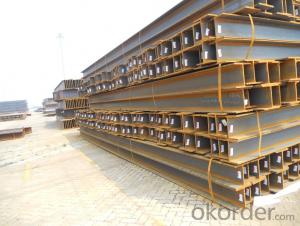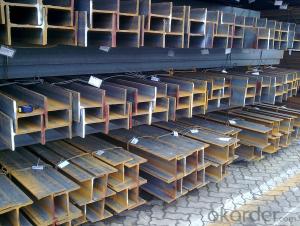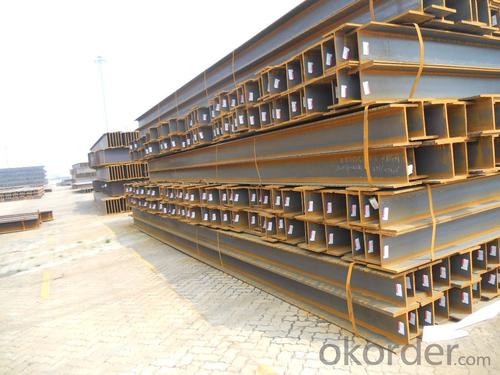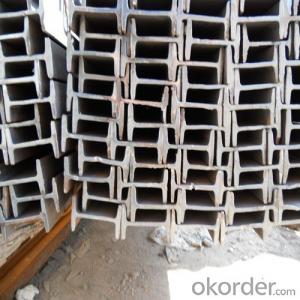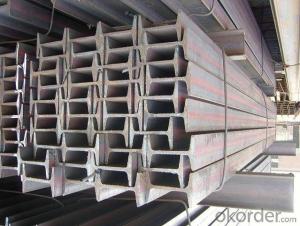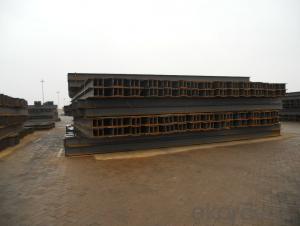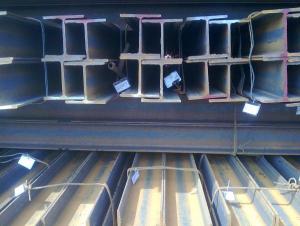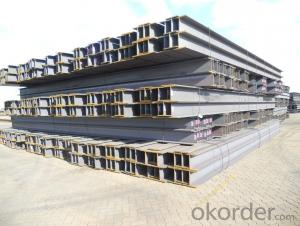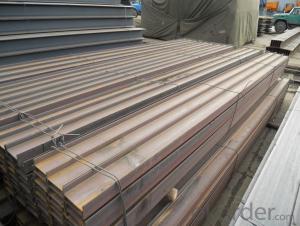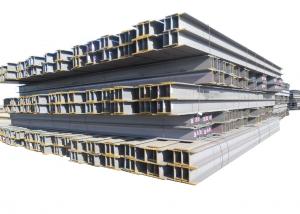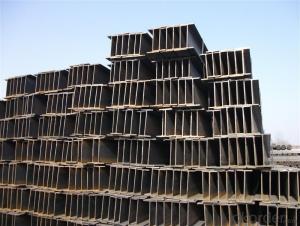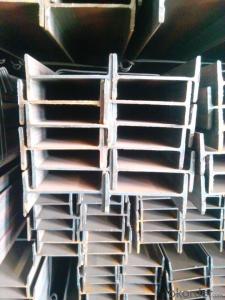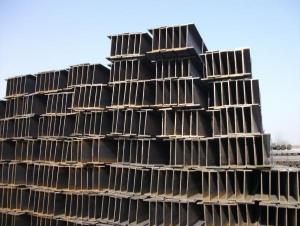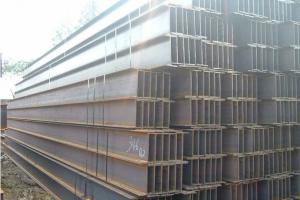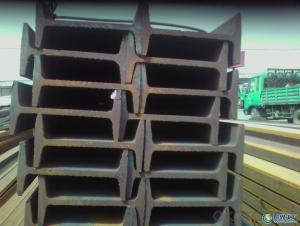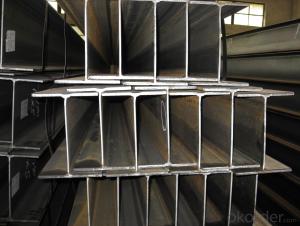H Beam Hot Rolled with Good Quality and Competitive Prices for Sale
- Loading Port:
- Tianjin
- Payment Terms:
- TT OR LC
- Min Order Qty:
- 25 m.t.
- Supply Capability:
- 20000 m.t./month
OKorder Service Pledge
OKorder Financial Service
You Might Also Like
Specification
Product Description:
OKorder is offering H Beam Hot Rolled with Good Quality and Competitive Prices for Sale at great prices with worldwide shipping. Our supplier is a world-class manufacturer of steel, with our products utilized the world over. OKorder annually supplies products to European, North American and Asian markets. We provide quotations within 24 hours of receiving an inquiry and guarantee competitive prices.
Product Applications:
H Beam Hot Rolled with Good Quality and Competitive Prices for Sale are ideal for structural applications and are widely used in the construction of buildings and bridges, and the manufacturing, petrochemical, and transportation industries.
Packaging & Delivery:
Packaging Detail: products are packed in bundle and then shipped by container or bulk vessel, deformed bar is usually naked strapping delivery, when storing, please pay attention to moisture proof. The performance of rust will produce adverse effect.
Each bundle weight: 2-3MT, or as required
Payment term: TT or L/C
Delivery Detail: within 45 days after received advanced payment or LC.
Label: to be specified by customer, generally, each bundle has 1-2 labels
Trade terms: FOB, CFR, CIF
FAQ:
Q1: How do we guarantee the quality of our products?
A1: We have established an advanced quality management system which conducts strict quality tests at every step, from raw materials to the final product. At the same time, we provide extensive follow-up service assurances as required.
Q2: Why buy Materials & Equipment from OKorder.com?
A2: All products offered byOKorder.com are carefully selected from China's most reliable manufacturing enterprises. Through its ISO certifications, OKorder.com adheres to the highest standards and a commitment to supply chain safety and customer satisfaction.
Q3: How soon can we receive the product after purchase?
A3: Within three days of placing an order, we will begin production. The specific shipping date is dependent upon international and government factors, but is typically 7 to 10 workdays.
Images:
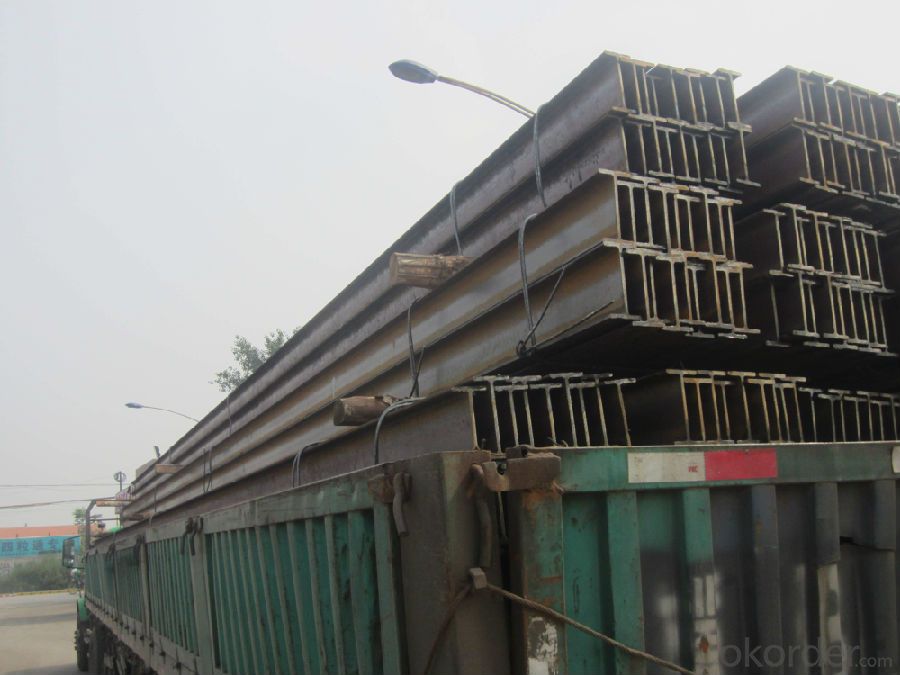

- Q: Can steel H-beams be used in the construction of hospitals or healthcare facilities?
- Yes, hospitals or healthcare facilities can make use of steel H-beams in their construction. Steel H-beams are extensively used in the field of construction due to their robustness, longevity, and adaptability. They provide exceptional structural support and are commonly employed in the construction of sizable edifices, including hospitals and healthcare facilities. In healthcare facilities, the utmost importance is placed on structural integrity and safety, both of which are met by steel H-beams. They possess the ability to endure heavy loads and bestow stability upon the building, thus ensuring the safety of patients, staff, and equipment. Steel H-beams also possess a remarkable resistance to fire and are non-combustible, a vital characteristic for the safety of healthcare facilities. Furthermore, steel H-beams offer a plenitude of design options. They can be effortlessly customized to meet specific architectural requirements and can support various types of roofing, flooring, and wall systems. This versatility allows for efficient space planning and the creation of larger open areas, often necessary in healthcare facilities to accommodate medical equipment, patient rooms, and specialized areas such as operating rooms and laboratories. Additionally, steel H-beams boast an extended lifespan and necessitate minimal maintenance. They are impervious to corrosion, pests, and decay, making them a dependable choice for healthcare facilities that need to remain operational over an extended duration. In conclusion, the strength, durability, safety features, design flexibility, and low maintenance requirements of steel H-beams make them an ideal choice for the construction of hospitals and healthcare facilities.
- Q: What are the different joining techniques used for connecting steel H-beams?
- There are several different joining techniques that can be used to connect steel H-beams. These techniques are used to ensure that the beams are securely connected and can withstand the loads and forces that they will be subjected to. Some of the common joining techniques for steel H-beams include: 1. Welding: This is one of the most common and widely used methods for joining steel H-beams. Welding involves melting the edges of the beams and fusing them together using heat. It provides a strong and permanent connection, but it requires skilled labor and proper welding techniques to ensure the quality and integrity of the joint. 2. Bolting: Another commonly used method for joining steel H-beams is through bolting. This involves using bolts, nuts, and washers to connect the beams together. Bolting provides a strong and durable connection, and it allows for easy disassembly and reassembly if needed. It is also less time-consuming compared to welding. 3. Riveting: Riveting is an older technique that involves using metal pins or rivets to connect the steel H-beams. This method requires drilling holes in the beams and inserting the rivets, which are then hammered or compressed to secure the joint. Riveting provides a strong connection, but it is less commonly used nowadays due to the availability of more efficient joining techniques. 4. Adhesive bonding: Adhesive bonding involves using high-strength adhesives or epoxy resins to bond the steel H-beams together. This method provides a lightweight and flexible connection, but it may not be suitable for applications that require high load-bearing capacity or where temperature variations are significant. 5. Mechanical connectors: Mechanical connectors, such as beam clamps or angle brackets, can also be used to join steel H-beams. These connectors are designed to provide a quick and easy connection, often without the need for welding or drilling. They are commonly used in construction projects where time and efficiency are crucial. It is important to note that the choice of joining technique depends on several factors, including the structural requirements, load-bearing capacity, project specifications, and budget. Consulting with a structural engineer or a qualified professional is recommended to determine the most suitable joining technique for connecting steel H-beams in a specific application.
- Q: Can steel H-beams be used for multi-story buildings?
- Yes, steel H-beams can be used for multi-story buildings. H-beams, also known as I-beams, are commonly used in construction because of their strength and load-bearing capabilities. These beams are designed to distribute the weight of the building evenly and provide structural support. Their shape allows for greater stability and resistance to bending or twisting forces. Steel H-beams are commonly used in the construction of multi-story buildings due to their ability to support heavy loads and provide a solid framework. Additionally, steel is a durable material that can withstand various weather conditions, making it a popular choice for high-rise construction.
- Q: Can steel H-beams be used in school or educational facility construction?
- Yes, steel H-beams can be used in school or educational facility construction. Steel H-beams are commonly used in construction due to their strength, durability, and versatility. They provide structural support and stability to buildings, making them suitable for use in schools and educational facilities where safety is a priority. Additionally, steel H-beams can be easily customized and fabricated to meet specific design requirements, allowing for flexibility in construction projects. Furthermore, steel is a sustainable and environmentally friendly material, which aligns with the principles of many educational institutions that strive for sustainability. Overall, steel H-beams are a viable and practical choice for construction in school or educational facilities.
- Q: How do steel H-beams compare to other structural beams?
- Steel H-beams are considered superior to other structural beams due to their high strength-to-weight ratio, which allows for longer spans and increased load-bearing capacity. Additionally, H-beams have a uniform shape, making them easier to work with during construction. They are also more cost-effective and durable, making them a popular choice for various construction applications.
- Q: Can steel H-beams be used in the construction of schools or educational buildings?
- Yes, steel H-beams can be used in the construction of schools or educational buildings. Steel H-beams are commonly used in construction due to their high strength and durability. They provide structural support and stability to buildings, making them suitable for educational facilities that require long-lasting and stable structures. Additionally, steel H-beams can be prefabricated, allowing for faster construction times and cost-effectiveness, which are important factors in educational building projects.
- Q: What are the different grades of steel used for manufacturing H-beams?
- There are several grades of steel that are commonly used for manufacturing H-beams. These grades vary in terms of their chemical composition and mechanical properties, which determine their suitability for different applications. Some of the commonly used grades include: 1. ASTM A36: This is a low carbon steel grade that is widely used for general structural purposes. It offers excellent weldability and machinability, making it a popular choice for H-beam manufacturing. 2. ASTM A572: This grade of steel offers higher strength and better corrosion resistance compared to A36. It is commonly used for applications that require higher load-bearing capacity, such as in heavy construction and bridge building. 3. ASTM A992: This grade is specifically designed for wide-flange shapes like H-beams. It offers higher yield strength and better ductility compared to A36, making it suitable for structural applications that require superior performance. 4. ASTM A588: This grade of steel is known for its high atmospheric corrosion resistance. It is often used in outdoor applications, such as bridges and buildings located in harsh environments. 5. ASTM A709: This grade is primarily used for construction of bridges and other infrastructure projects. It offers high tensile strength, excellent toughness, and improved weldability, making it suitable for H-beam manufacturing in such applications. It is important to note that the selection of a specific grade of steel depends on the requirements of the project, including the load-bearing capacity, environmental conditions, and other factors. Consulting with a structural engineer or steel supplier can help determine the most appropriate grade for a particular application.
- Q: What are the different span lengths achievable with steel H-beams?
- The span lengths achievable with steel H-beams can vary depending on several factors such as the size and weight of the beam, the load it needs to support, and the specific design requirements of the project. However, generally speaking, steel H-beams can achieve span lengths ranging from a few feet to several hundred feet. For smaller residential or commercial projects, H-beams with span lengths of 10 to 20 feet are commonly used. These beams can adequately support typical loads such as floor joists, roof trusses, or small bridges. For larger industrial or infrastructure projects, steel H-beams with much longer span lengths are utilized. In these cases, the beams can be designed to span over 100 feet or even several hundred feet. This allows for the construction of large-scale structures like warehouses, factories, bridges, or high-rise buildings. It's important to note that achieving longer span lengths with steel H-beams might require additional structural supports, such as columns or piers, to ensure the beam's stability and load-bearing capacity. Additionally, professional structural engineers and architects should be involved in the design process to ensure that the chosen beam size and span length are appropriate for the specific project requirements and safety standards.
- Q: Are steel H-beams suitable for rooftop structures?
- Yes, steel H-beams are suitable for rooftop structures due to their strength, durability, and ability to support heavy loads. They provide a stable framework that can withstand various weather conditions and ensure structural integrity for the entire rooftop system.
- Q: How do steel H-beams contribute to sustainable building certifications?
- Steel H-beams contribute to sustainable building certifications in several ways. First, they are made from recycled materials, reducing the demand for new resources and minimizing the environmental impact of the construction process. Additionally, steel H-beams are highly durable and have a long lifespan, reducing the need for frequent replacements and conserving materials over time. Their structural efficiency also allows for lighter building designs, reducing overall energy consumption and minimizing carbon emissions. Moreover, steel H-beams are often fabricated off-site, reducing construction waste and improving the efficiency of the building process. Overall, the use of steel H-beams in construction can help achieve sustainable building certifications by promoting resource efficiency, durability, and reduced environmental impact.
Send your message to us
H Beam Hot Rolled with Good Quality and Competitive Prices for Sale
- Loading Port:
- Tianjin
- Payment Terms:
- TT OR LC
- Min Order Qty:
- 25 m.t.
- Supply Capability:
- 20000 m.t./month
OKorder Service Pledge
OKorder Financial Service
Similar products
Hot products
Hot Searches
Related keywords
